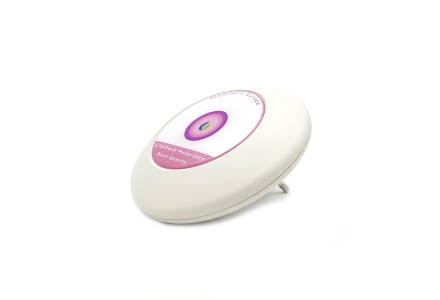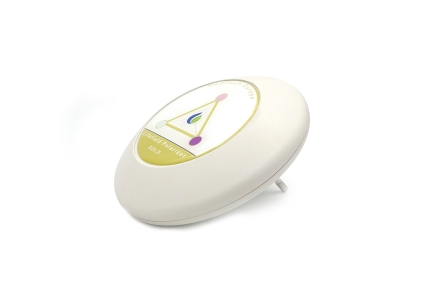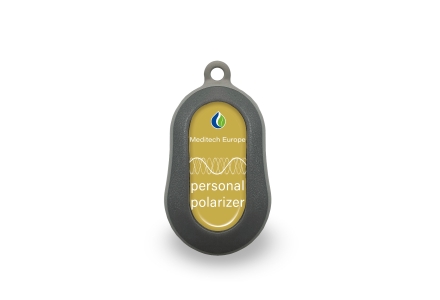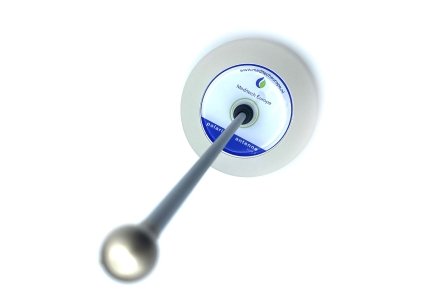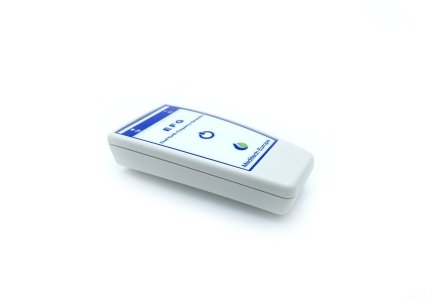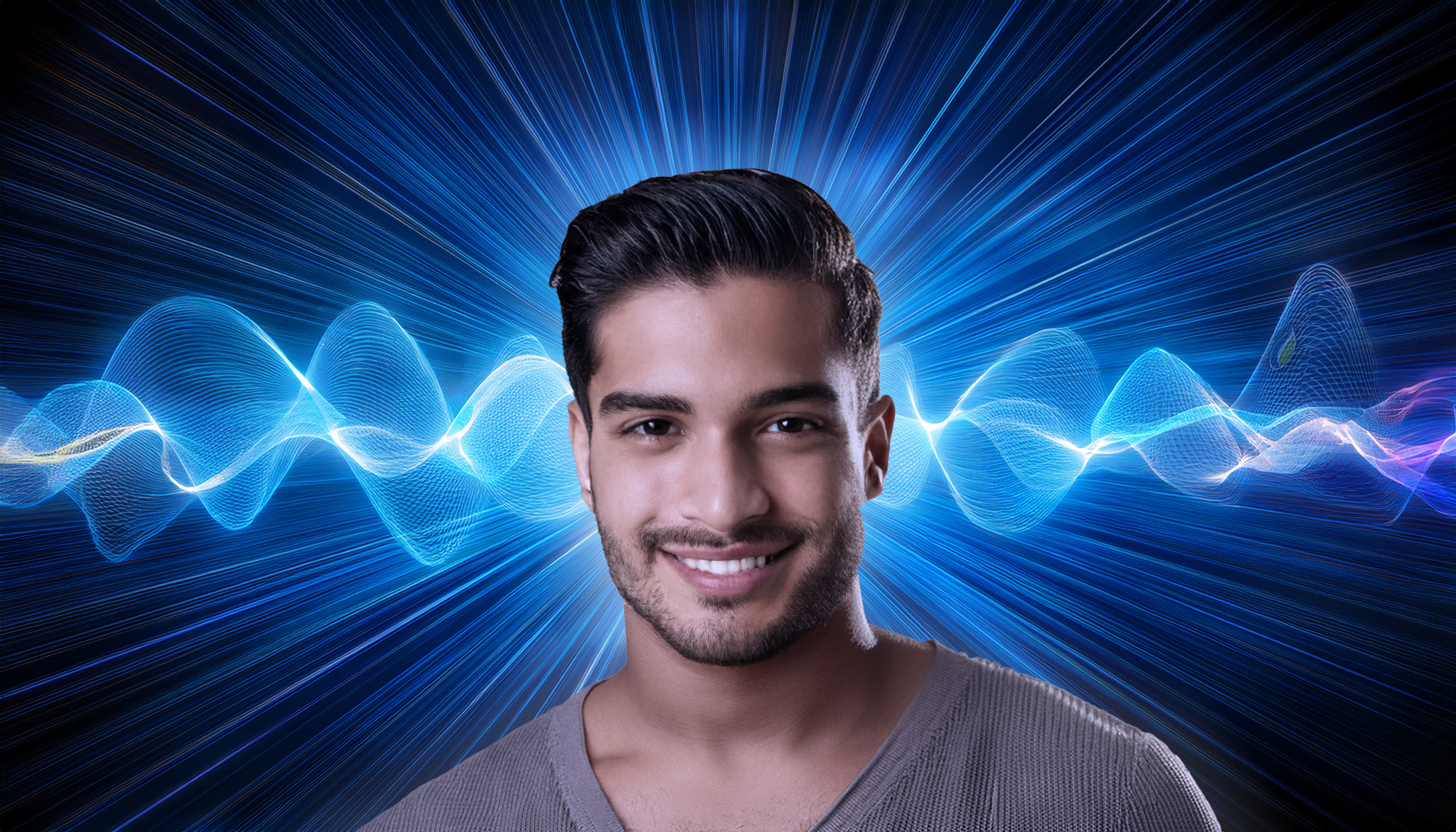
Brain waves play a crucial role in our state of consciousness - from deep relaxation and sleep to peak moments of clarity and focus. Brain waves can be measured as well as influenced. Meditation can direct these waves in subtle but powerful ways, allowing you to experience more balance and relaxation. But did you know that these frequencies exist not only in our brains, but all around us? From the groundbreaking discoveries of Cade and Coxhead to the mystery of the Schumann frequency, in this blog we dive deeper into the fascinating interplay between meditation, brain waves and the resonance of the earth.
What are brain waves?
Brain waves are electrical signals created when nerve cells (neurons) in the brain communicate with each other. These waves have different frequencies, which are often measured using an electroencephalogram (EEG). Depending on the frequency of brain waves, we can identify different mental states, such as relaxation, concentration, sleep or deep meditation. Listed below are the different types of brain waves, each associated with specific mental and emotional states:
Delta waves (0.5 - 4 Hz): These waves occur during deep sleep and recovery. They are the slowest brain waves and are associated with the deepest sleep stages, when the body physically recovers and begins to regenerate.
Theta waves (4 - 8 Hz): Theta waves are often seen during light sleep, deep meditation, trance or dreaminess. They are associated with creativity, intuition and deep relaxation, and play an important role in meditation, especially in releasing thoughts and deepening inner experience.
Alpha waves (8 - 12 Hz): Alpha waves occur in a relaxed but alert state, such as during light meditation or just after awakening. They are often associated with a state of calm, as well as increased concentration and focus. Alpha waves are often the result of balanced brain activity and are associated with a sense of calm.
Beta waves (12 - 38 Hz): Beta waves are typical of moments of active concentration and alertness, such as in problem solving, thinking and decision making. However, too much beta activity can lead to stress or excessive mental activity, resulting in anxiety or tension.
Gamma waves (38 - 100 Hz): Gamma waves are the fastest brain waves and occur when we are involved in intense mental activity, such as processing information, learning or during moments of intense focus. They are also associated with higher cognitive functions such as memory, awareness and experiencing “flow” states. There is increasing research on gamma waves in the context of meditation, as advanced meditators often show an increase in gamma activity, indicating deep concentration and clarity of mind.
The difference between the left and right hemispheres of the brain
Our brains consist of two halves: the left and right hemispheres, each of which has different functions and characteristics. Although both halves work together, there are certain tasks that are often dominant in a specific hemisphere of the brain. This affects brain wave activity, as each of the halves may exhibit different frequencies of brain waves depending on a person's mental and emotional state.
Left hemisphere: The left hemisphere is often associated with logic, analytical thinking, language and detailed processing. When the left hemisphere is dominantly active, more beta waves will often be visible, indicating active thought, concentration and problem solving. The left hemisphere plays an important role in thinking about practical, linear problems and often becomes active when we are processing new information or in conversation.
Right hemisphere: The right hemisphere is more heavily involved in creative thinking, intuition, emotion and spatial awareness. When the right hemisphere is more dominant, we often see increased activity in alpha and theta waves, indicating relaxation, intuitive processing and creativity. The right hemisphere helps us look at problems holistically and live more in the moment, which is typical of meditation and other mindful experiences.
What's interesting is that meditation practices can also affect the balance between these two hemispheres of the brain. In certain forms of meditation, such as mindfulness or concentration meditation, brain activity can become more balanced, with both left and right hemispheres working together in a harmonious way. This can result in more balanced brainwave activity, which allows for better integration and cooperation between the two hemispheres.
The relationship between body and mind: Relaxation of the brain, relaxation of the body?
There is a strong connection between body and mind: when our brain is in a state of relaxation, the body often automatically follows with physical relaxation. This is because the nervous system, which connects the brain and the body, has the ability to regulate stress responses. For example, when we practice meditation, we often see brain waves increase in frequencies such as alpha and theta, indicating a calm and focused mind. This mental state can then affect the autonomic nervous system, lowering the heart rate, reducing muscle tension and making breathing deeper and more regular. This leads to an overall physical relaxation of the body.
In fact, this is one of the reasons why meditation is often recommended as an aid in reducing stress and promoting physical well-being. Many forms of meditation focus not only on calming the mind but also on calming the body, with the two interacting.
However, it is important to emphasize that this process can vary individually. In some people, the body may find it more difficult to relax even when the mind is calming, especially if there are deep-seated physical tensions or stress. Then it may be helpful to combine meditation with relaxation exercises.
Still, the general trend is that when the brain calms, the body often follows in a state of relaxation, leading to greater well-being on both mental and physical levels.
Research on meditation and brain waves
Maxwell Cade and Nona Coxhead are often considered pioneers in research on the influence of meditation on brain waves. In the 1970s and 1980s, they developed the “Mind Mirror,” an electroencephalograph (EEG) device that allowed them to measure the brainwaves of meditating people in real time. Their work was groundbreaking because it provided insight into how experienced meditators produced different brain waves, including alpha and theta waves, during their meditation practices. Cade and Coxhead found that meditators were often in a state of deep relaxation and heightened awareness, characterized by specific patterns of brain waves that differed from the normal brain activity of non-meditators.
Although their research focused primarily on the overall balance between alpha and theta waves, contemporary research on meditation increasingly recognizes the role of gamma waves as well. More recent research shows that these waves play a crucial role in achieving higher states of consciousness during meditation. Gamma waves are often associated with increased concentration, memory and cognitive clarity, and studies show that advanced meditators often exhibit increased gamma activity, which may indicate intense, deep focus and clarity of mind. Cade and Coxhead's research laid the groundwork for such discoveries, and modern technology has allowed us to further explore and understand these subtleties in brain activity.
The Schumann frequency: The resonance of the earth and meditation
The Schumann frequency, at 7.83 Hz, actually falls in the area of the alpha waves in our brain (8-12 Hz), which are often associated with relaxation and meditation. This schumann frequency, is considered the earth's natural electromagnetic resonance.
Some researchers and practitioners believe that when we are in a meditative state and alpha waves in the brain increase, we tune into a frequency similar to the Schumann resonance. This could help further calm the mind and promote a sense of connection to the earth or universe.
There are also theories that suggest that the earth rhythms of the Schumann frequency may have a harmonizing effect on our brain, possibly contributing to the relaxation and calmness we often experience in a natural environment.
Although the scientific evidence on this is not yet completely conclusive, the idea that we as humans could possibly be in resonance with the earth during meditation is an intriguing one. It could explain why some people experience deep peace and tranquility when they tune into a natural environment, such as by meditating in or near nature.
Meditech Europe: In harmony with the earth
Meditech Europe stands for innovation, quality and a conscious way of life. We offer a carefully curated range of advanced technologies, natural products and smart solutions that help to optimize your living environment. One example is our Dual Earth Frequency Generator, which generates an electromagnetic field with a frequency of 7.83 Hz. This can counterbalance the excess of artificial radiation, which may cause living things to perceive the earth's natural Schumann frequency less well.
Want to learn more about our products and how they can contribute to a balanced living environment? Contact us for more information. We would be happy to help you!
